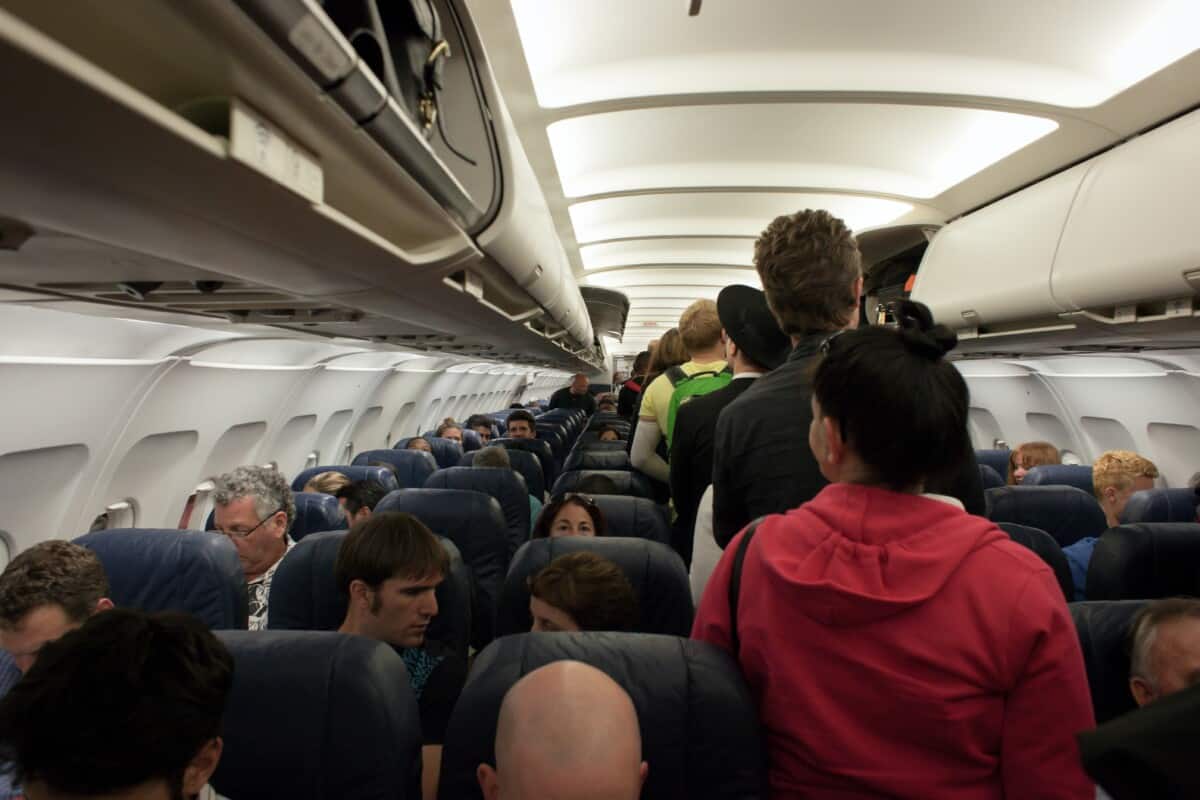Many things about airlines and air travel don’t make sense, and they can leave the average passenger feeling stressed and irritated. However, most frequent flyers will agree that the boarding process is undoubtedly the most infuriating thing about air travel, right after security checks, baggage allowance, and airplane food. Indeed, there must be a good reason airlines don’t board window seats first, right?
Airlines don’t board window seats first because it would disrupt the seating arrangement of people who like to sit together, particularly friends and families. This boarding method would require passengers to board in a way that people sitting together won’t board together.
Boarding this way would be a problem for many passengers, and many families with kids would object to it—even though it would be faster than the conventional boarding method used by many airlines today. This article will dive into how airlines board passengers, the various boarding methods, and the most efficient way to board passengers. Let’s get started!
How Do Airlines Board Passengers?

Most people board airplanes without worrying much about the boarding process, so they assume there’s nothing exceptional going on during boarding. However, if you pay attention, you’ll notice a system with how various airlines board their passengers and manage their cabin space. They usually board passengers with speed, efficiency, and passenger comfort in mind—at least, they try to do this.
Airlines board passengers using a standard, back-to-front method. They board older, disabled, and special needs passengers first, then first-class passengers, exit row, rear passengers, and, finally, passengers sitting in the plane’s forward part. Of course, not all airlines use this method.
This boarding method might seem logical, but it’s not very efficient. During boarding, there are usually many hold-ups as passengers mill around trying to use the overhead bin and get their preferred seats. Interferences like these are called aisle interference and seat interference, respectively.
There’s usually a lot of waiting on the plane due to limited mobility and because all the passengers boarding are trying to get their hand luggage sorted before they sit. All standard boarding does is transfer the queue from the bridge to the aisle. As such, you may wonder why it’s still used today—especially since there’ve been a few reports about why this boarding method doesn’t work.
Many airlines still use this method because it works—and because their customers prefer it. While other passenger boarding methods might speed up emplaning time, it’ll affect seating arrangements for many passengers flying together.
Airline Passenger Boarding Methods
There are many other boarding methods besides the standard, back-to-front system, and they’re the result of real-life trials and various computer simulations. It might seem unlikely, but there have been many experimental and theoretical studies on airline passenger boarding methods, mainly regarding which way would be most efficient.
Today, airlines use different passenger boarding methods for their operations—depending on which they prefer.
Here are the passenger boarding methods that airlines use today:
- Standard (back-to-front) method
- Random method
- Outside-in method
- Southwest method
- Steffen method
This list highlights boarding methods in increasing order of efficiency. Therefore, the most efficient way to board passengers on an airplane is using the Steffen method, while the least efficient is the Standard method. The Southwest method, the outside-in method, and the random method are the second most efficient.
Of course, efficiency in airline boarding refers to the amount of time spent during the boarding process without much regard for passenger feedback or satisfaction. So, it makes sense that even though a method might be efficient, airlines rarely use it since it’ll leave passengers dissatisfied.
I’ll go over the airline passenger methods in the next section of this article, but I’ll skip the standard method since I already discussed it before.
Random Method
The random method is aptly named since it works by letting passengers onto the flight without paying attention to any order. In the Random passenger boarding method, priority flyers board first, then everyone else enters the plane based on when they checked in at the airport. Passengers still get assigned seats, but they don’t board based on their seats.
It’s a faster method than the Standard method, and airlines like US Airways and Virgin Atlantic have used it successfully in their operations.
Random boarding is faster since most passengers aren’t trying to get into the limited seats and overhead bins simultaneously. There’ll still be a bit of congestion, but it’s usually spread out around the plane and caused by some passengers letting others into their rows.
Outside-In Method
The outside-in method requires passengers with window seats to board the plane first, then middle seats and aisle seats. This method is faster than the Random method since no one will obstruct a row when a passenger sits, and there’ll be no seat interference during boarding.
And since there’ll be more mobility in the plane, aisle interference is usually minimal. However, there’ll still be some congestion with passengers trying to use the overhead bin. That said, the congestion is typically less than in the Random method because there’ll be more overhead bin options for passengers to use.
Still, as I mentioned at the beginning of this article, passengers who are flying together won’t be able to board simultaneously. Therefore, they may be unable to sit together during the flight.
Southwest Method
The Southwest method is similar to the random method, but passengers don’t get assigned seats for their flight. Passengers can sit anywhere without worrying about seat or aisle interference since they can pick any row or overhead bin that suits them. The method is the fastest in use today.
The major drawback to using the Southwest method is customer satisfaction. Most passengers might get stressed by the many seating options when boarding, so they’ll likely rate the airline low even if the boarding process is fast.
There’s also the likelihood that passengers flying together might be unable to sit together if one of them emplanes later.
Steffen Method
The Steffen method is named after Jason Steffen, an American astrophysicist who researched and compared passenger boarding methods in a Seattle airport after a particularly long emplaning process. The method is similar to the outside-in method, but passengers get on the plane in a peculiar fashion.
First, passengers in the window seats on one side of the plane board, followed by window seat passengers on the other side. Afterward, passengers fill the middle seats on one side, then the other. Then they do the same for aisle seats.
The Steffen method is efficient since it eliminates aisle and seat interference, completely removing congestion of any kind. It’s the fastest method but is not widely used for the same reasons as the Outside-in method.
Key Takeaways
Airlines don’t board window seats first because it will disrupt the seating arrangement of people who would like to sit together, notably friends and families. And although there are other more efficient passenger boarding methods, the standard method used by airlines is preferred since it ensures passenger satisfaction.
For more on making your flight comfortable, see Are Economy Plus Seats Worth It? Here’s How to Decide.
Sources
- Condé Nast Traveler: Why the Airline Boarding Process Is All Wrong
- View From The Wing: The CEO Of American Airlines Explains Why Back-To-Front Boarding Doesn’t Work
- Boeing: The Role of Computer Simulation in Reducing Airplane Turn Time
- ArXiv: Experimental test of airplane boarding methods
- ArXiv: Optimal boarding method for airline passengers
- Jason Steffen: Prof. Jason H. Steffen
- Vox: The way we board airplanes makes absolutely no sense
- Astrobites: The Optimum Way to Board a Plane
- Afar: Why Can’t Airlines Fix the Boarding Process?
- Business Insider: Scientific proof that boarding by zones is a stupid system — and why airlines still haven’t abandoned it
- The Points Guy: Everything you need to know about the best seats on Southwest Airlines
- BBC: Tests show fastest way to board passenger planes
- Wired: Airlines Won’t Dare Use the Fastest Way to Board Planes



